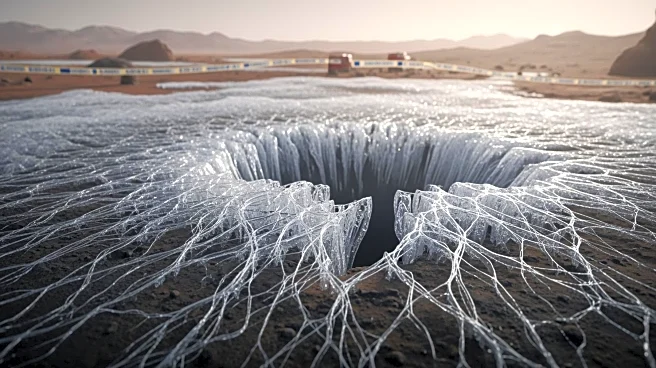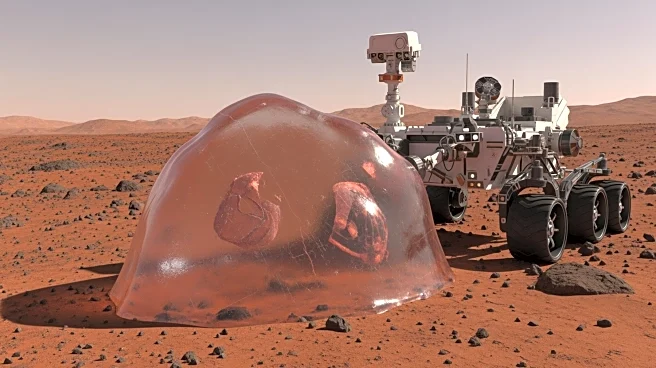What's Happening?
Recent research suggests that Mars may have networks of liquid water flowing through its permafrost, potentially providing habitable environments for microscopic organisms. The study, led by Hanna Sizemore
at the Planetary Science Institute, used soil composition data from Mars to estimate the presence of liquid water veins. These veins, formed by the dissolution of salts in the water, could be large enough to support microbial life. The findings are based on measurements from NASA's Phoenix spacecraft, which landed on Mars in 2008, indicating that these liquid channels could be prevalent at latitudes higher than 50 degrees.
Why It's Important?
The discovery of liquid water veins on Mars is significant as it enhances the possibility of finding life on the planet. These environments could serve as potential habitats for microorganisms, offering new targets for future Mars exploration missions. The presence of liquid water, even in small quantities, is a critical factor in the search for extraterrestrial life. This research challenges previous assumptions about the habitability of Mars and could influence the direction of future astrobiological studies and exploration strategies.
What's Next?
Future Mars missions may focus on exploring these liquid water veins to search for signs of life. The study suggests that landing and sampling these areas could provide valuable insights into the potential for life on Mars. Researchers will likely continue to refine their models and conduct further studies to better understand the distribution and characteristics of these liquid channels. The findings could also inform the design of instruments and technologies for detecting and analyzing potential biosignatures on Mars.
Beyond the Headlines
The potential habitability of Martian permafrost raises questions about the limits of life in extreme environments. Understanding how life could exist in such conditions on Mars could provide insights into the adaptability of life on Earth and the potential for life elsewhere in the universe. This research also highlights the importance of interdisciplinary approaches, combining planetary science, astrobiology, and engineering, to explore the possibilities of life beyond Earth.











